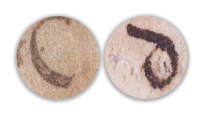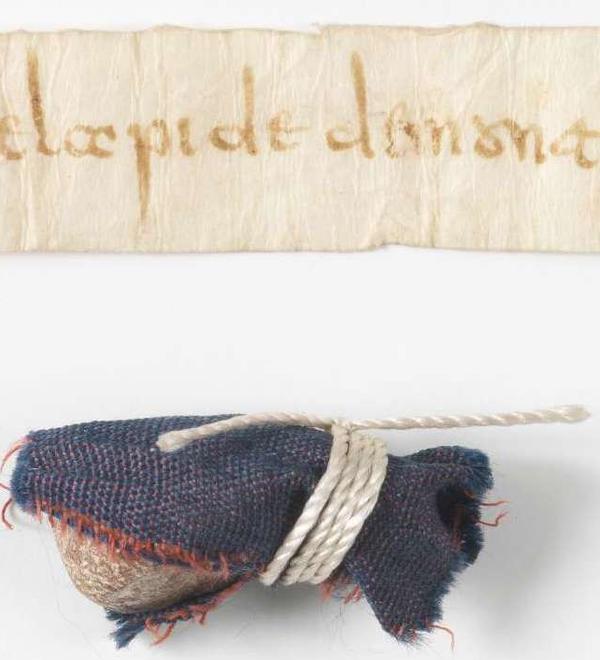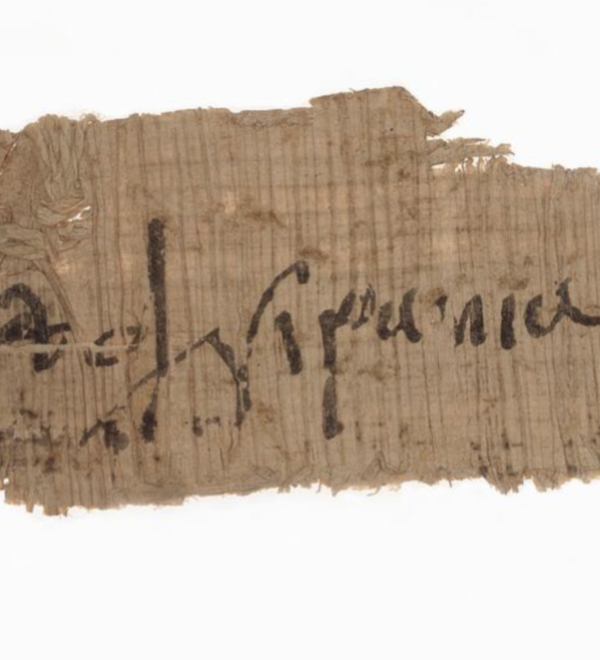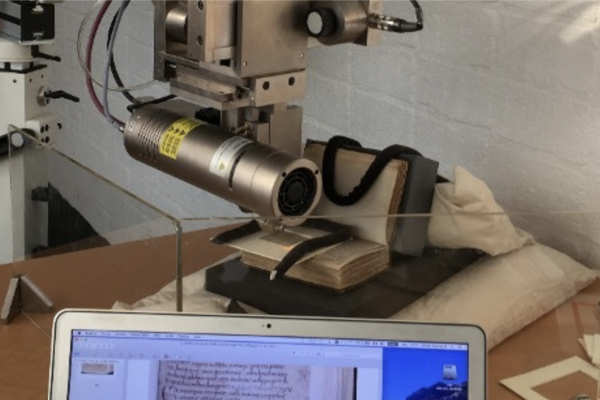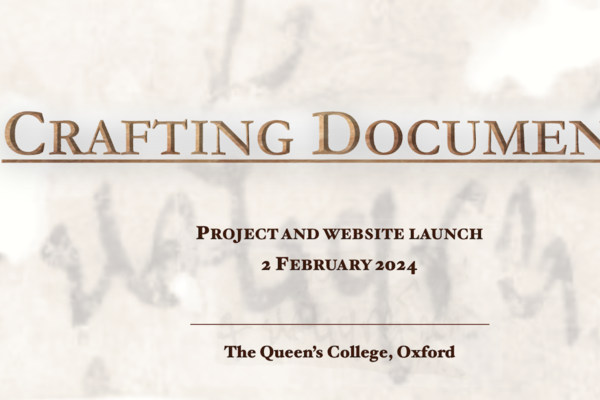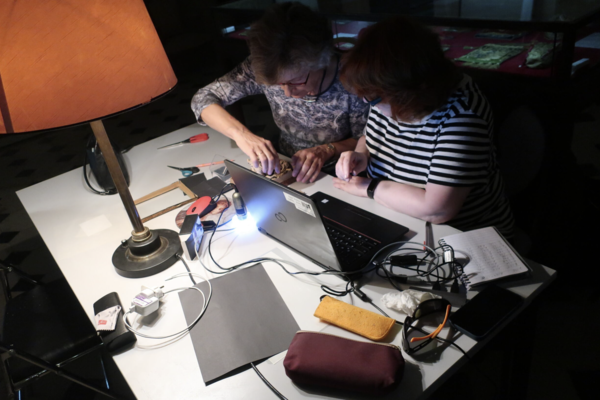Home
Crafting Documents explores how changing ways of making ink and preparing parchment affected the work of scribes who produced written documents in the key transitional period between Late Antiquity and the Middle Ages, c. 500 to c. 800 CE. Through the analysis of a corpus of around 500 identificatory labels, that were originally attached to relics of saints and holy places, it will generate a new understanding of the materiality of the written word and expose the role of the saints’ cults in fostering these craft activities. The project will achieve this through a ground-breaking partnership between medievalists from the University of Oxford and scientists from the Analysis of Artefacts and Cultural Assets Division of the Bundesanstalt für Materialforschung und-prüfung (BAM) in Germany.
This pioneering project brings together technical analysis of parchment and ink with a palaeographical examination of penmanship to explore the evolution of document production between c.500-c.800 CE. At its centre is the systematic exploitation of a huge but almost entirely neglected corpus of tiny relic labels (many no more than a few centimetres long) which to date have been judged too insignificant for attention. Yet, as samples of both elite and non-elite writing, they offer an important cross-section of all aspects of documentary activity, opening the possibility of understanding the crafts involved in writing across a much broader social spectrum than has been possible hitherto. Study of the relic labels will allow, for the first time, the interplay of writing skills and those of ink and parchment production to be differentiated across time and region, and simultaneously raise questions about the transmission of the relevant artisan skills from place to place and across generations. The insights from these approaches will, in turn, illuminate patterns of relic circulation and dissemination from a new angle.
Our aims:
- Conduct a systematic analysis of the relationship between the evolution of handwriting, the quality of parchment and of the ink used to write on it.
- Understand whether the techniques for making parchment changed in these centuries, and if so, to propose an explanation.
- Investigate the variety of methods of making ink in this period.
- Evaluate whether relic cults played a role in transmitting knowledge of how to make parchment and/or prepare ink.
- Explore whether the knowledge generated by objectives 2 and 3 above adds to understanding the development of saints' cults in this period.
- Investigate how relic documentation challenge standard models of the production of the written word in this period.
- Bring to scholarly attention a large but neglected body of documents by means of web resources, conference papers, and publications.
EXPLORE THE CORPUS
Chelles Abbey collection, Archives Nationales, Paris
Sancta Sanctorum collection (parchment), Vatican Library
Sancta Sanctorum collection (papyrus), Vatican Library
LATEST NEWS
GET IN TOUCH
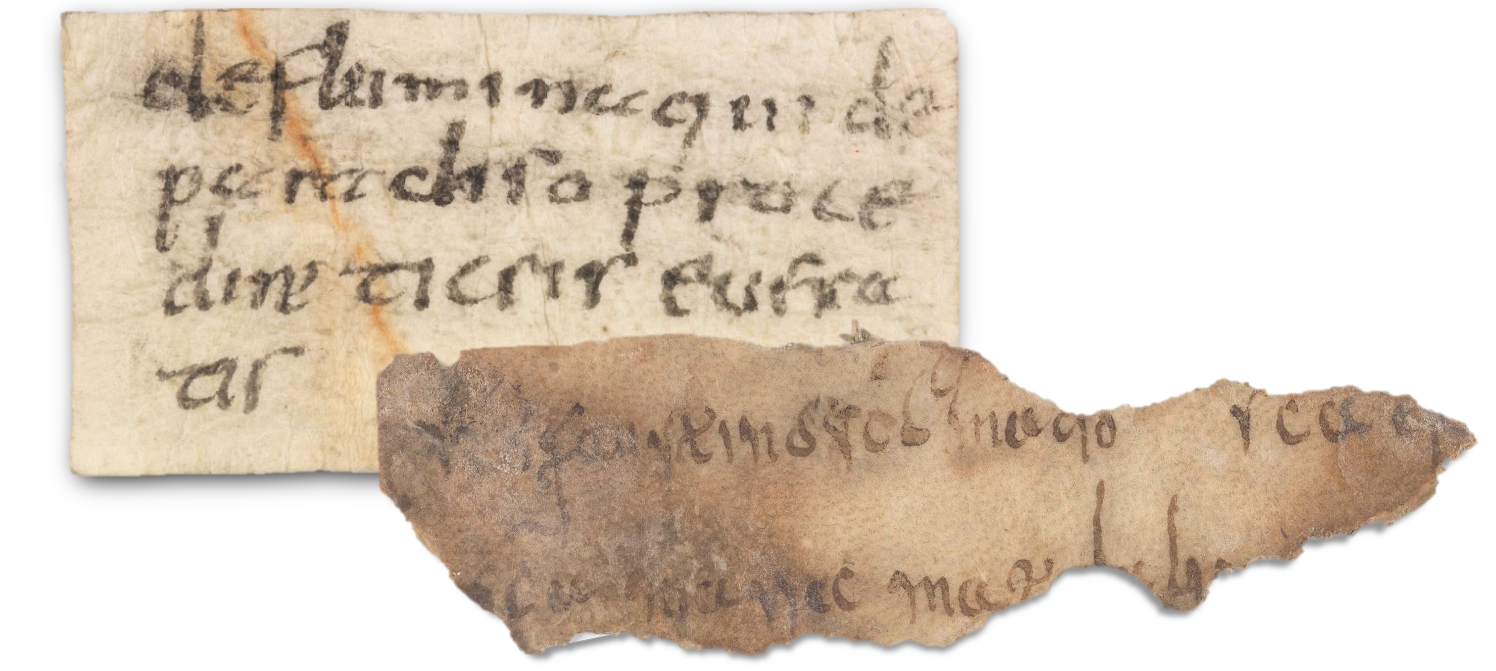
For queries about the project and collaborations please contact us
You can also follow us on X (formerly Twitter)
This project has received joint funding from the Arts & Humanities Research Council (UK) and Deutsche Forschungsgemeinschaft (Germany)

